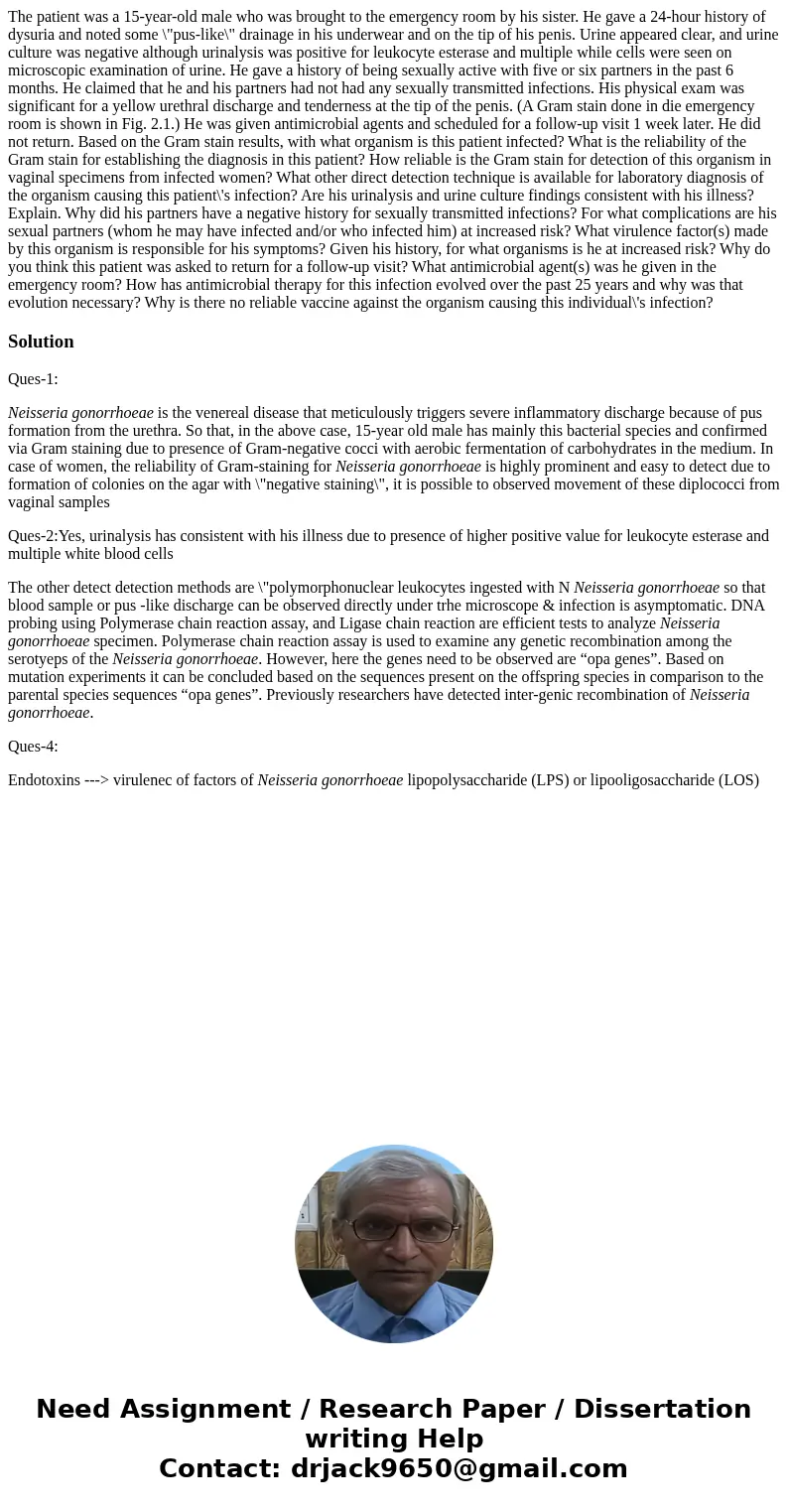The patient was a 15-year-old male who was brought to the emergency room by his sister. He gave a 24-hour history of dysuria and noted some \"pus-like\" drainage in his underwear and on the tip of his penis. Urine appeared clear, and urine culture was negative although urinalysis was positive for leukocyte esterase and multiple while cells were seen on microscopic examination of urine. He gave a history of being sexually active with five or six partners in the past 6 months. He claimed that he and his partners had not had any sexually transmitted infections. His physical exam was significant for a yellow urethral discharge and tenderness at the tip of the penis. (A Gram stain done in die emergency room is shown in Fig. 2.1.) He was given antimicrobial agents and scheduled for a follow-up visit 1 week later. He did not return. Based on the Gram stain results, with what organism is this patient infected? What is the reliability of the Gram stain for establishing the diagnosis in this patient? How reliable is the Gram stain for detection of this organism in vaginal specimens from infected women? What other direct detection technique is available for laboratory diagnosis of the organism causing this patient\'s infection? Are his urinalysis and urine culture findings consistent with his illness? Explain. Why did his partners have a negative history for sexually transmitted infections? For what complications are his sexual partners (whom he may have infected and/or who infected him) at increased risk? What virulence factor(s) made by this organism is responsible for his symptoms? Given his history, for what organisms is he at increased risk? Why do you think this patient was asked to return for a follow-up visit? What antimicrobial agent(s) was he given in the emergency room? How has antimicrobial therapy for this infection evolved over the past 25 years and why was that evolution necessary? Why is there no reliable vaccine against the organism causing this individual\'s infection?
Ques-1:
Neisseria gonorrhoeae is the venereal disease that meticulously triggers severe inflammatory discharge because of pus formation from the urethra. So that, in the above case, 15-year old male has mainly this bacterial species and confirmed via Gram staining due to presence of Gram-negative cocci with aerobic fermentation of carbohydrates in the medium. In case of women, the reliability of Gram-staining for Neisseria gonorrhoeae is highly prominent and easy to detect due to formation of colonies on the agar with \"negative staining\", it is possible to observed movement of these diplococci from vaginal samples
Ques-2:Yes, urinalysis has consistent with his illness due to presence of higher positive value for leukocyte esterase and multiple white blood cells
The other detect detection methods are \"polymorphonuclear leukocytes ingested with N Neisseria gonorrhoeae so that blood sample or pus -like discharge can be observed directly under trhe microscope & infection is asymptomatic. DNA probing using Polymerase chain reaction assay, and Ligase chain reaction are efficient tests to analyze Neisseria gonorrhoeae specimen. Polymerase chain reaction assay is used to examine any genetic recombination among the serotyeps of the Neisseria gonorrhoeae. However, here the genes need to be observed are “opa genes”. Based on mutation experiments it can be concluded based on the sequences present on the offspring species in comparison to the parental species sequences “opa genes”. Previously researchers have detected inter-genic recombination of Neisseria gonorrhoeae.
Ques-4:
Endotoxins ---> virulenec of factors of Neisseria gonorrhoeae lipopolysaccharide (LPS) or lipooligosaccharide (LOS)

 Homework Sourse
Homework Sourse